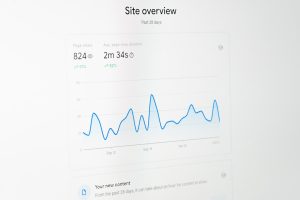
Imagine walking into a store and finding a price tag that says, “Pay what this is worth to you.” Sounds wild, right? But that’s kind of how value-based pricing works, especially for SaaS (Software-as-a-Service) products.
Instead of pricing based on how much it costs to make the software, or guessing what competitors charge, you set the price based on the value it delivers to the customer.
Why Value-Based Pricing Rocks
Here’s why SaaS companies love this pricing model:
- More revenue: Customers are often willing to pay more than you think if the product delivers huge value.
- Happy customers: People feel good when they pay for something that clearly helps them win.
- Better segmentation: You can charge different prices to different customer types, based on the value they get.
But there’s a trick. You have to really understand what your users value.
Cost-Based vs. Competitor-Based vs. Value-Based
Before diving further into the fun stuff, let’s explore the differences between the main pricing approaches.
| Pricing Type | What it’s based on | Common Problem |
|---|---|---|
| Cost-Based | Your internal costs + target profit | Doesn’t reflect what customers will pay |
| Competitor-Based | Other companies’ pricing | Assumes others got it right |
| Value-Based | What the customer thinks it’s worth | Requires good research |
The value-based model is a winner when done right. Let’s look at how to make it happen.
Steps to Build a Value-Based Pricing Model
You can’t just roll a dice and choose $79/month. Here’s a simple step-by-step guide to get you closer to your ideal price.
1. Know Your Customer
Not all customers are created equal.
Break your market into different groups based on:
- Company size
- Industry
- Use case
- Role (e.g., marketer vs. engineer)
This helps you see how different people use your software — and what that usage is worth to them.
2. Understand the Value They Get
Some products save time. Others make money. Some keep things secure or organized. Figure out your core value props.
Ask yourself:
- What problem does my product solve?
- How painful is that problem?
- How much do users gain by solving it?
If your product saves a manager 10 hours a week, how much is that time worth? If it increases sales by 15%, how much $$ is that bringing in?

3. Talk to Customers
The secret to value-based pricing? Talking to actual users.
Run surveys. Do interviews. Ask questions like:
- “What would you use instead of our product?”
- “What would you expect to pay for something like this?”
- “What would make this a no-brainer value?”
Some companies use clever tools like the Van Westendorp Price Sensitivity Meter to find the sweet spot. Sounds fancy, but it’s really just asking users when something feels too cheap or too expensive. Super helpful!
Pricing Models You Can Try
Once you’ve got a feel for what your product is worth, it’s time to pick a pricing model that fits. Here’s a few:
1. Per-User Pricing
This is classic. Charge per seat or team member.
- Pros: Scales with team size.
- Cons: Can discourage growth (“wait, don’t invite Susan, she’ll cost us $20/month!”)
2. Tiered Plans
Offer 3–4 pricing tiers with different features.
- Pros: Works for different customer types.
- Cons: Can get confusing if too many add-ons.
3. Usage-Based Pricing
Pay for what you use — like API calls, storage, or actions.
- Pros: Feels fair to users.
- Cons: Harder to predict revenue.
4. Outcome-Based Pricing
This is the holy grail. You charge based on the results users get.
- Pros: Directly matches value.
- Cons: Hard to implement. Often requires custom deals.
Pick the one that aligns with how your users gain value from your product.
How to Test Your Price (Without Losing Sleep)
Okay — you have a price in mind, but what if it’s too low… or too high?
Don’t worry. You can run small experiments that reveal a lot.
1. A/B Pricing Tests
Split your site visitors. Show half one price, the other half a different price.

See which group converts better. Make sure the only thing you change is the price!
2. Value-Based Talk Tracks
Your sales team can test higher prices by testing how they communicate the value. Can they justify a higher price with strong benefit-driven messaging?
This helps you learn where resistance pops up — and why.
3. Willingness-To-Pay Surveys
These surveys ask questions like:
- “At what price is this so cheap it’s suspicious?”
- “At what point is it starting to feel expensive?”
It’s like feeling out the edges of value perception.
4. Private Beta Offers
Before launching publicly, offer deals to early beta users at different prices. See which ones people sign up for. Then use that data to polish your pricing for prime time.
Watch Out for These Traps
Even pros mess up pricing. Here are some common mistakes to avoid:
- Guessing what people will pay – Always validate with data.
- Giving too many options – People get decision fatigue. Keep it simple!
- Not updating pricing over time – As your product gets better, your value goes up. So should your price.
Wrap-Up: Make Your Price Reflect Your Power
There’s no magic number when it comes to SaaS pricing. But when you use a value-based approach, you build trust. You maximize revenue. And best of all—your pricing tells the world, “Hey, this is what we’re really worth.”
So do the work. Understand your customer. Tell the value story. And test what works. Your perfect price is out there, waiting to be found.






